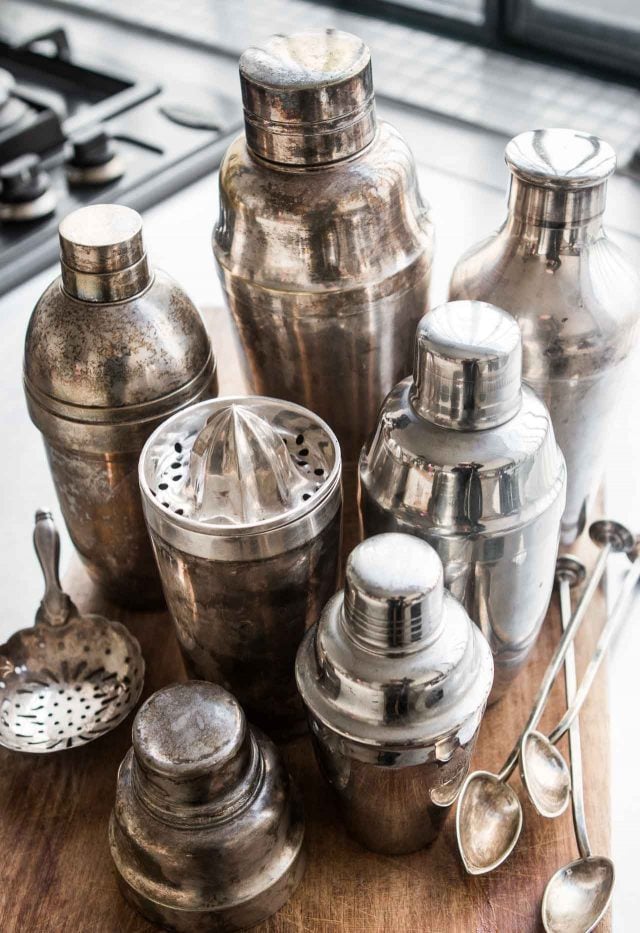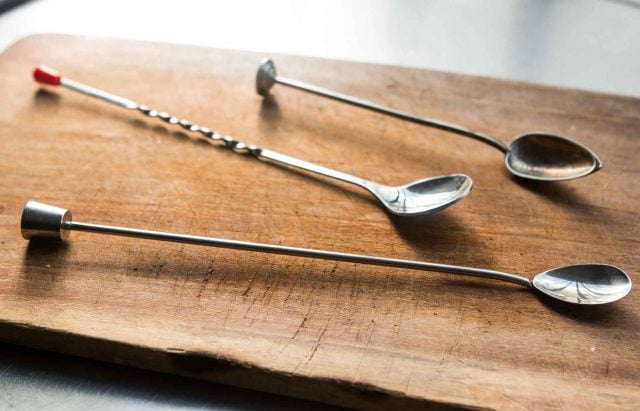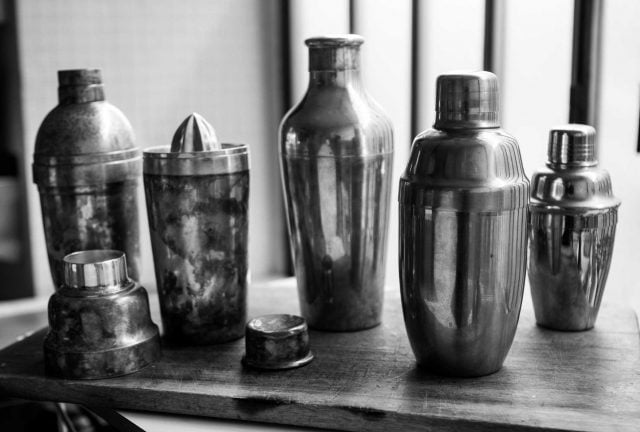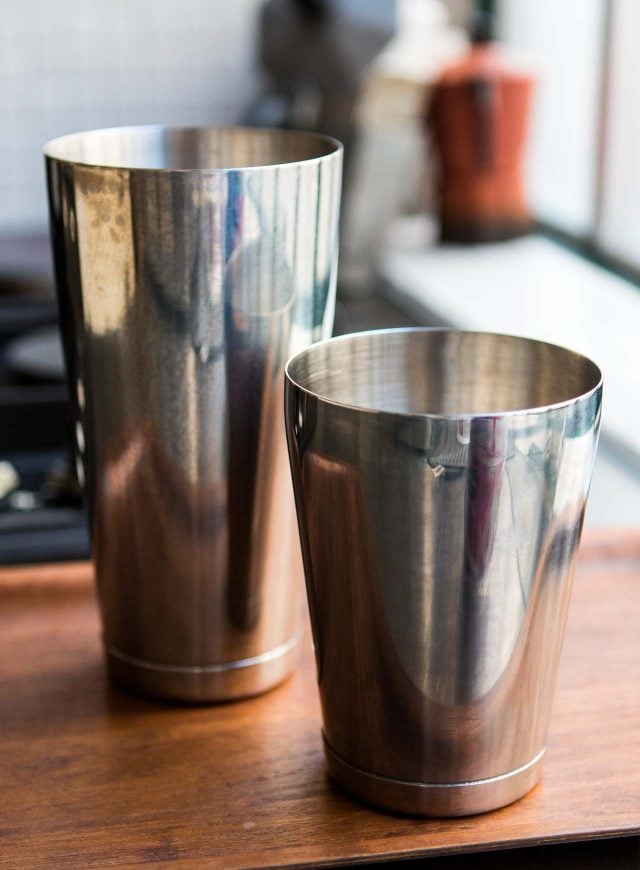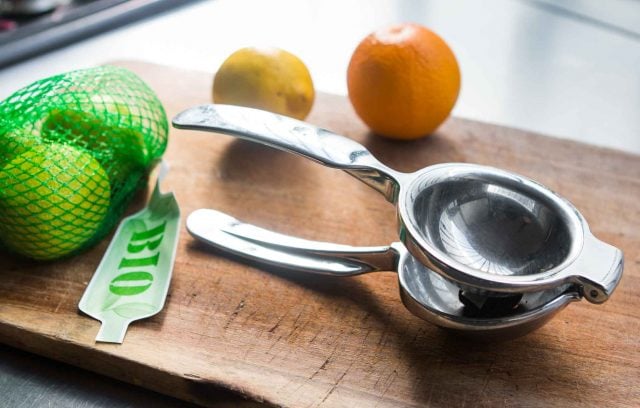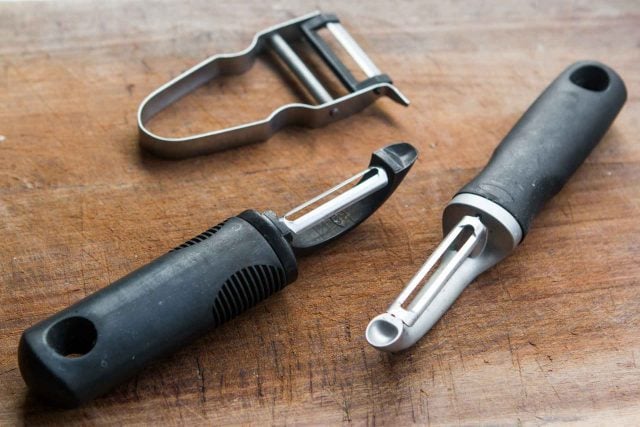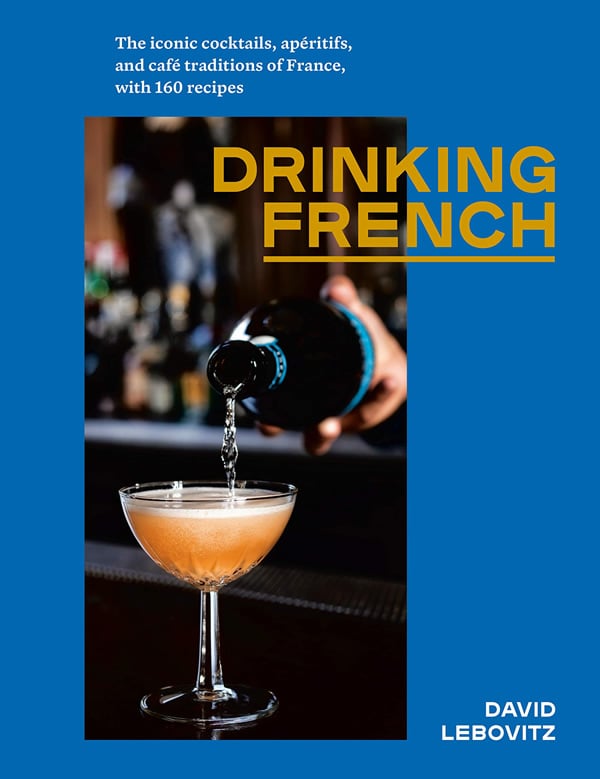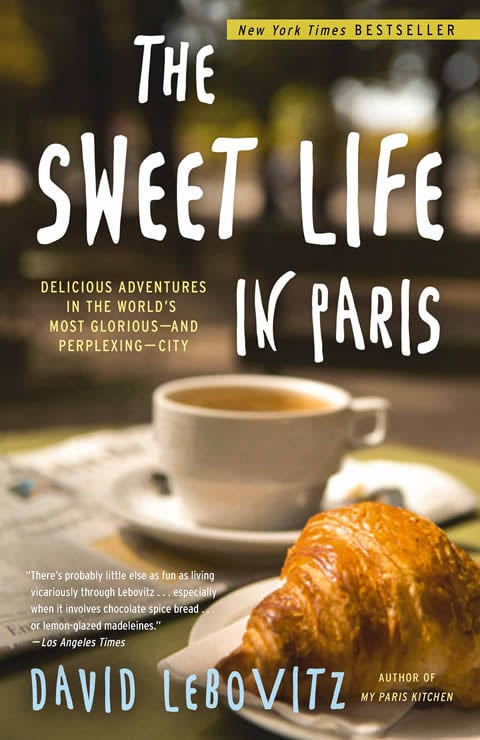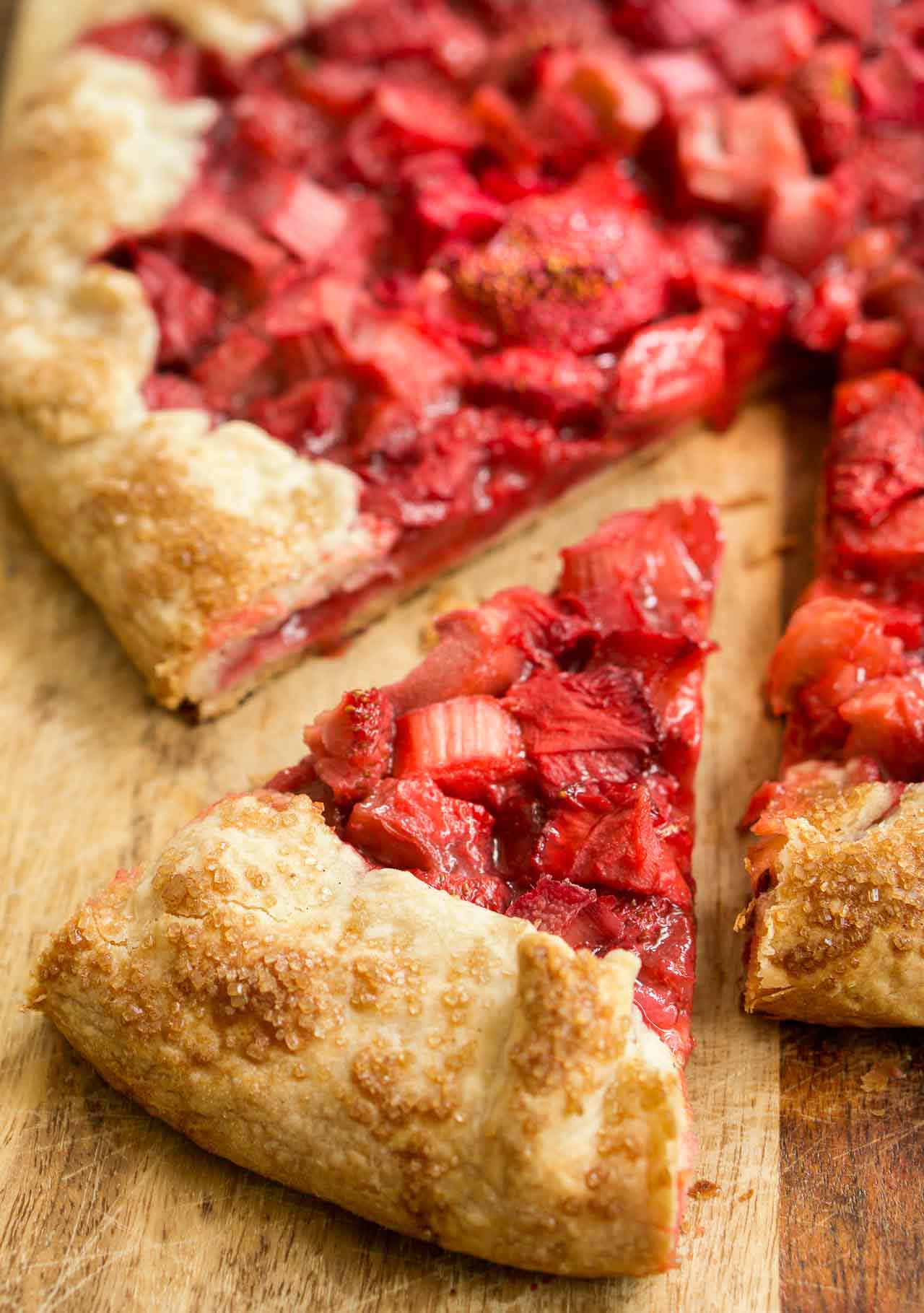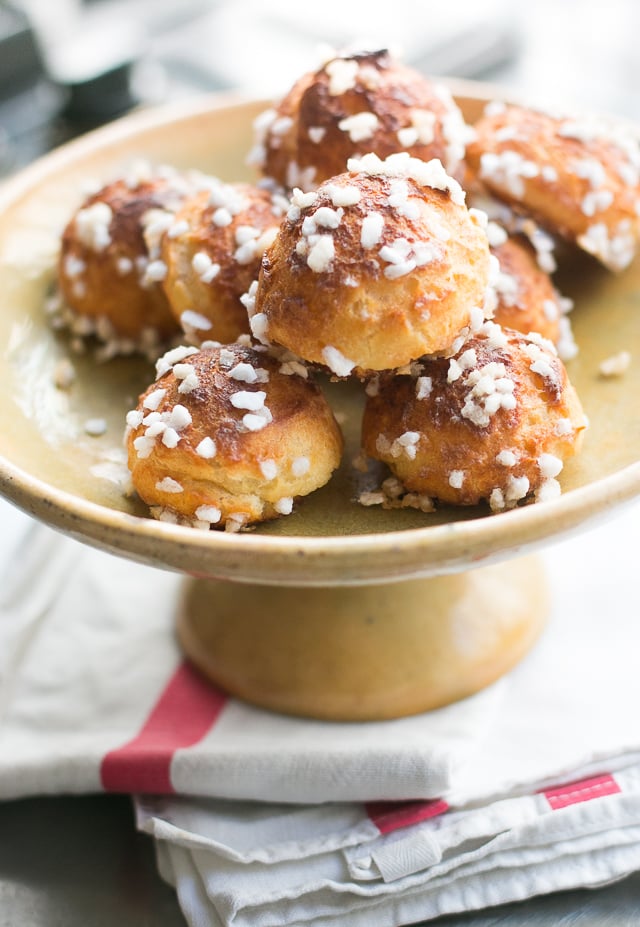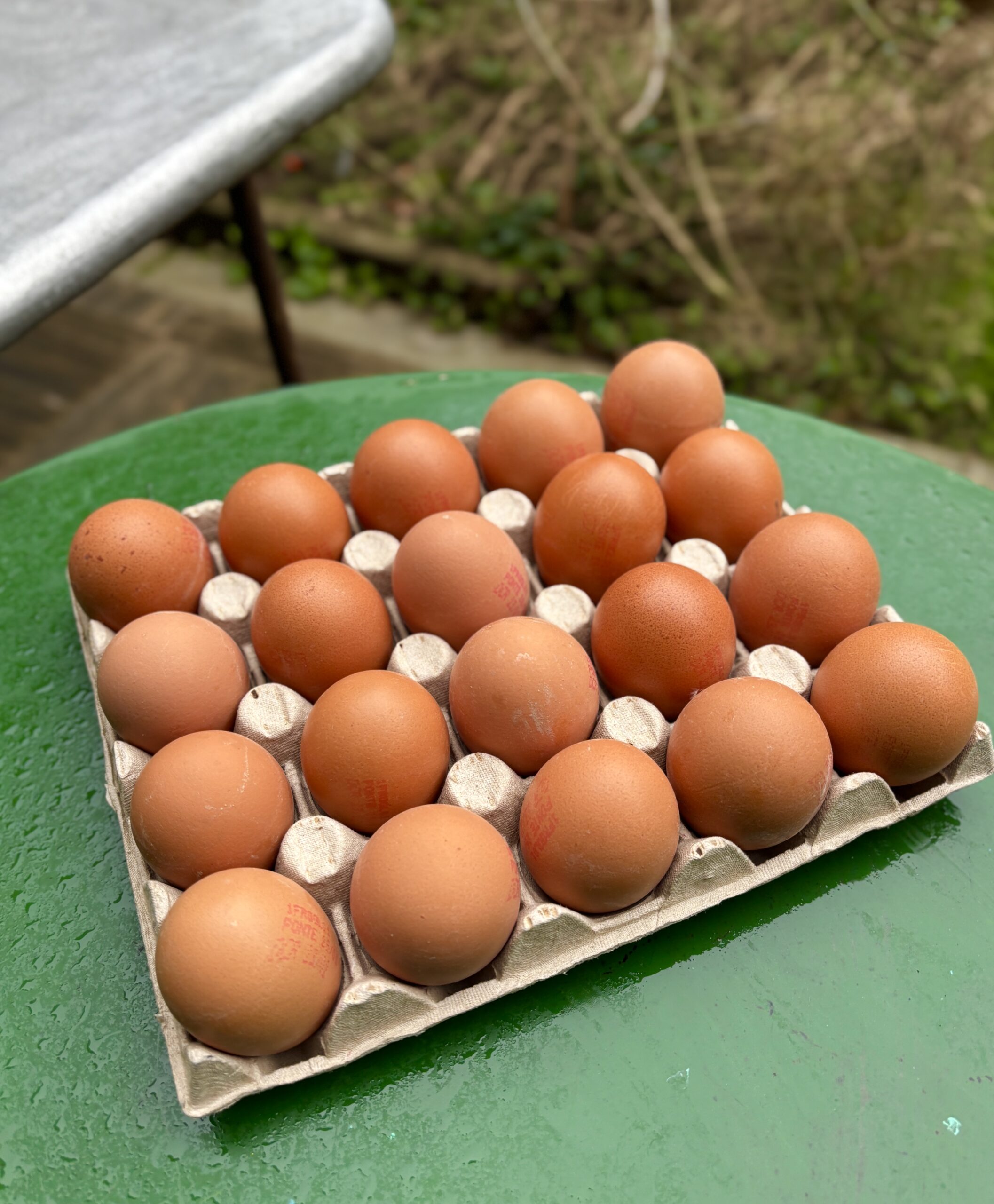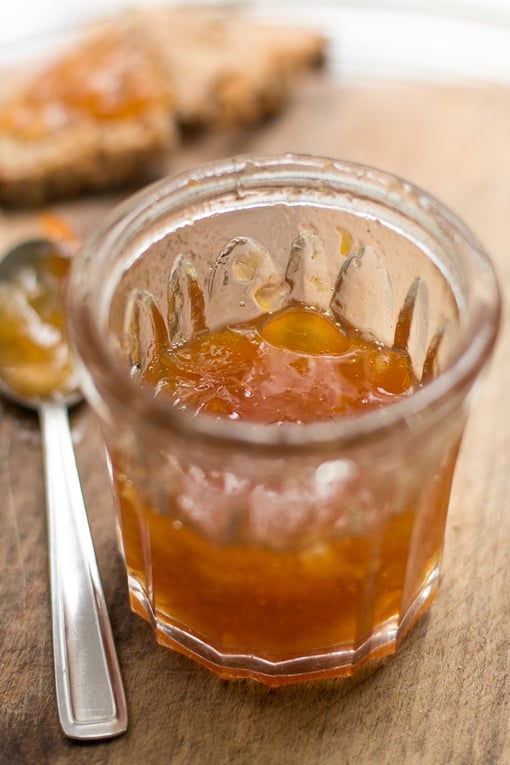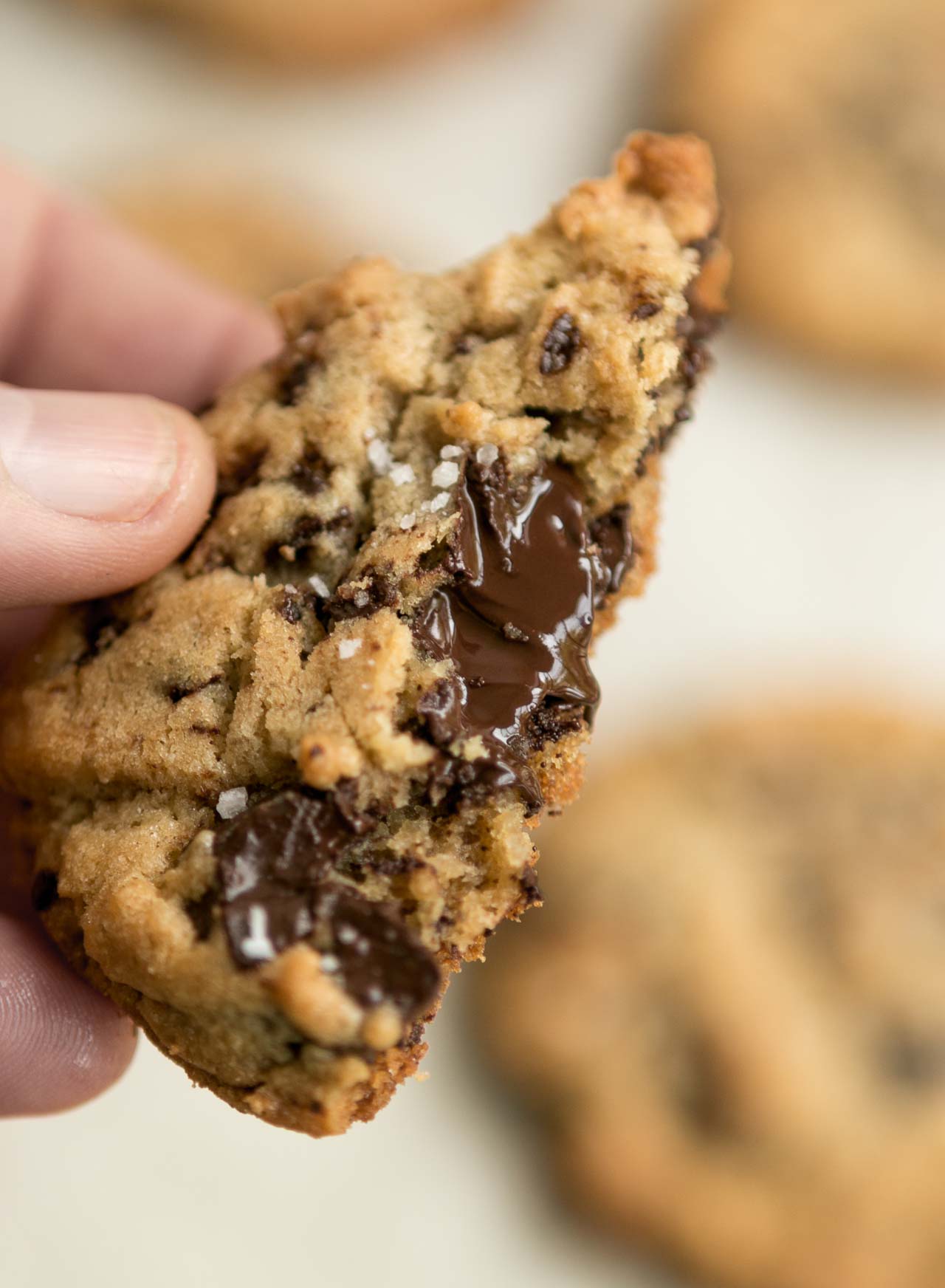Basics Cocktail Tools For Setting Up a Home Bar
You don’t need much, or any, fancy equipment or tools to make any of the cocktails in my book Drinking French, or any other drinks and cocktails. Below I’ve also listed what can easily fill in if you don’t have a proper cocktail shaker or mixing glass, using items you probably already have at home, although I’ll admit that having a few “tools of the trade” makes mixing and shaking up drinks easier, and more fun. So I’ve compiled a basic list of bar and cocktail tools that I own, in case you are interested in stocking your own home bar.
There are plenty of places to buy new cocktail paraphernalia, including Cocktail Kingdom, Bar Supplies, Food 52, Urban Bar, Bar Keeper, West Elm, Amazon, and Bar Solutions. Restaurant supply shops and kitchenware stores, such as Bed, Bath and Beyond, Williams-Sonoma and Sur La Table also offer a selection of bar tools and if you live in a major city (or even in a smaller town), there may be a dedicated shop that focuses on bar equipment where you can get personalized service and advice.
Ebay, Etsy, Le Bon Coin (in France) are online resources for used and vintage cocktail paraphernalia but note that vintage cocktail items have become quite collectible, so your chances of coming across a bargain are less-likely than they used to be. But I’ve scored a few things at flea markets in Paris and elsewhere. It just takes some time – and a little bit of luck – to find them.
[For detailed advice about bar tools, I highly recommend The Bar Book by Jeffrey Morgenthaler. It’s a great guide to all aspects of mixology and is lauded by professional bartenders, as well as home cocktail-makers. Another book that’s geared toward professionals, but approachable for anyone, is Meehan’s Bartender Manual by Jim Meehan.]
Don’t feel like doing any shopping for tools? No problem! In place of a cocktail shaker, use a large glass jar with a lid or a workout water bottle. In place of a mixing glass, a wide-mouth jar, measuring cup, or pitcher will work just fine. A chopstick or soup spoon can be used in place of a stirring spoon, and a standard mesh strainer can be used for straining.
Bar Spoon
One of the first things I realized that I needed to upgrade when I started mixing a lot of drinks was my bar spoon. I had bought one of those plastic, red-tipped numbers with the spiral stem (above), that are sold cheaply at restaurant supply stores. After my fingers felt like I was stirring sharpened blades, I bought the stirring spoon on the bottom, which can do double-duty as a muddler. If you go for a spoon with spiral grooves, I recommend spending a little more to get one with well-designed spirals that feel good in your hand.
Shakers
For non-pros, I recommend starting out with a three-piece Cobbler shaker, the kind shown in the photo above. The middle one is similar-looking to a Parisian-style shaker, which usually only has two parts and no built-in strainer. (Mine has a strainer so it’s somewhere of a hybrid, I suppose.)
I’ll have to admit, I don’t know where I got the cocktail shaker that I also have, the one that’s the second one from the right. I think it was left behind in my first apartment in Paris by the previous tenant and the bottom is marked “Zack.” It’s the one that I used when I started out and it’s easy to clean and doesn’t leak. I now most frequently use the vintage Parisian-looking shaker because I appreciate something that looks and feels a little nicer. It has crossbars attached to the inside of the lid that help break up the ice as you shake it. Cobbler and Parisian shakers have built-in strainers so there’s usually no need to use a mesh strainer unless you are shaking something like fruit, berries, or herbs, which can clog the holes of the shaker.
I now use a Boston shake, which comes in two pieces. You’ll need to have a separate strainer. Mine (above) is made by Lumian and the two tins are slightly weighted, which makes shaking easier. Also you’ll notice the smaller tin has a slightly curved inward lip, which helps in getting the two parts apart after you’ve shaken a cocktail.
Oxo makes an economical cocktail shaker that I haven’t used, but I’m sure works well, as I have some of their other bar and baking products and like them a lot. Cocktail Kingdom offers stylish cocktail shakers geared toward professionals, but suitable for home bartenders, and Bar Products has a selection of cocktail shakers that aren’t as pretty, but will do the job. I’ve collected a variety of vintage shakers, as you can see from above, although the seal on some of them isn’t tight anymore so they leak when I shake with them. I haven’t found anywhere that can repair them so I’d advise against buying a vintage shaker online, unless it’s from a trusted dealer who has tested it out and/or will give you a refund if it leaks.
Jigger
For home cocktail-making, the easiest jigger I have found to use is the Oxo Good Grips mini-angled measuring cup. For those of us who are always searching for our glasses, it’s easy to read. They also make a stainless-steel jigger (right), which admittedly is more stylish, but I find the markings on the clear one easier to use. The clear one is also available in milliliters (and ounces) in some countries.
Mixing Glass
I have two mixing glasses, One is from West Elm (the cut glass one on the left) which I got with a gift certificate someone gave me, and the other I found on Ebay (on the right), which is new. I like the clean lines of the clear one, but the one on the left is wider and more stable, so it’s easier to stir briskly in.
Strainer
The Oxo strainer in the foreground is a very good all-purpose cocktail strainer and won’t break the budget. I do like my vintage ones, shown behind it, too, although the one with the spring (back right) doesn’t fit into my narrower mixing glass. So if you go the vintage route, make sure it’ll fit into your mixing glass.
Juicer
I use a juice press, which works well for oranges, lemons, and limes. While you can get them in two sizes – one for lemons and limes, the other for oranges – if you get the larger one for oranges…spoiler: it works fine for all three! So you just need to get one. Mine is made by KitchenAid but it’s such a basic piece of equipment, any similar-looking juice press will work just as well. Shops that specialize in multicultural foods often sell brightly-colored ones of good quality as many cuisines prominently use citrus juice and they carry ones that are up getting a heavy workout. Avoid ones made of reactive materials that can react with the acid in citrus and give the juice a “tinny” taste.
Citrus Peeler
Once again Oxo comes to the rescue with my favorite swivel peelers. They’re nice and sharp, and stay that way. I’ve had both of mine for years. In Europe, I keep one of the U-shaped ones on hand (shown above the other two peelers) as locals are used to them and find them easier to use. If you use one and it has a similar-looking blade, wash and dry it just after using as the blade can rust. These are used primarily for making citrus twists for garnishes.
Ice Tray
It’s easy to overlook the importance of ice in a cocktail, other than it’s primary purpose, which is to cool a drink. If you want your drink to be as lovely looking as possible, consider getting a few square ice cube trays. And if you want your cocktails to taste as good as possible, since ice can get old and stale, it’s best to use “fresh” ice, meaning ice that hasn’t been sitting in your freezer longer than a few days. The longer ice sits, the longer it can absorb other flavors from your freezer. I like the way the square cubes look in drinks and the trays are not expensive, although you need to be a little careful carrying them from the sink to the freezer as they flop around. I have the ones shown above, as well as one that makes larger cubes, which are great for Negronis and Old-Fashioneds, where you don’t want ice that’ll melt too quickly in the drink. (I avoid spherical ice since the large ice balls tend to chill down the end of my nose, which detracts from whatever I am drinking.)
If you don’t want to buy ice cubes trays, you can make your own “artisanal” ice by filling a wide plastic container partially full of water and freezing it. When ready to use, slip the block of ice between a kitchen towel (or in a Lewis bag, which is also good for making crushed ice) and break it up with a mallet or something similar. The large chunks of ice (or the crushed ice) will make you look like a pro!
Cocktail Coupes
I get asked about my go-to cocktail coupes a lot. I have a number of cocktail glasses that I’ve picked up at flea markets, and I don’t mind mixing and matching when I have company. But these are my favorite cocktail glasses, which you can buy new. Made by Schott Zweisel, I purchased my Tritan glasses at Verrerie des Halles in Paris. You can find them on Amazon, and elsewhere with a little searching.
Drinking French
My book is now available, which features 160 recipes for classic French apéritifs, beloved café drinks (including three different types of hot chocolate, fruit drinks, and icy-cold chocolate and coffee frappés), as well as new and iconic French cocktails. There’s also a chapter of recipes for appetizer snacks to go with them. Check it out at your local bookseller or online!
Drinking French is available from your local independent bookseller, including Book Larder, White Whale, Kitchen Arts and Letters, Omnivore, Powell’s, Now Serving, Strand, Books & Books, Books are Magic, and RJ Julia, as well as others bookshops. Global readers can order Drinking French from Book Depository, which offers free international shipping. It’s also available at Bookshop, Indie Bound, Amazon, and Barnes & Noble, which is offering signed editions of the book, while available.
